15 Simple Ways to Maximize Burning Fat While Walking

Walking is one of the simplest yet most effective ways to burn fat and improve overall health. As Dr. Milica McDowell, a doctor of physical therapy and VP of Operations at Gait Happens, explains, walking can be optimized for maximum fat-burning with the right techniques. With 20 years of experience in physical therapy and a background in biomechanics and exercise physiology, Dr. McDowell provides expert strategies to enhance your walking routine. By understanding the science of fat burning, monitoring your heart rate, and incorporating advanced techniques, you can supercharge your walks and achieve your weight loss goals.
1
Understanding the Science of Fat Burning While Walking
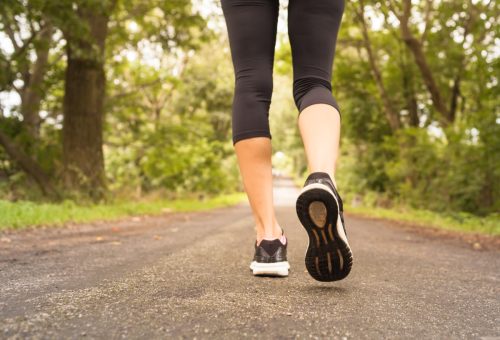
My name is Dr. Milica McDowell. I’m a doctor of physical therapy. With 20 years of experience, I have worked as a university faculty member in health and human performance for nine years, teaching courses in biomechanics and exercise physiology. I currently work as the VP of operations at a brand called Gate Happens, which is a foot health and walking education institute. Walking is an effective way to burn fat for the following reasons.
2
The Optimal Heart Rate Zone for Fat Burning
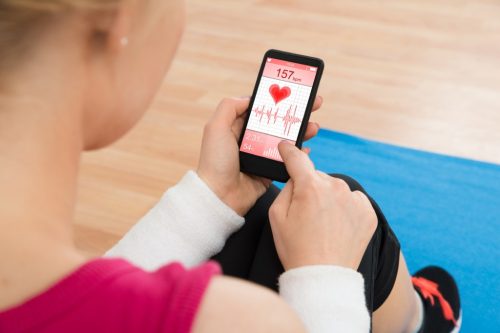
When we’re trying to burn fat, we want to work at a lower heart rate intensity compared to when we want to burn carbohydrates. In order to work at a lower heart rate intensity, you need to know your projected max heart rate, which is an easy formula for that is 220 minus your current age. Then, in order to work in a lower impact or lower heart rate zone, you need to work between 50 and 70% of that heart rate max.
3
How to Calculate Your Fat-Burning Heart Rate
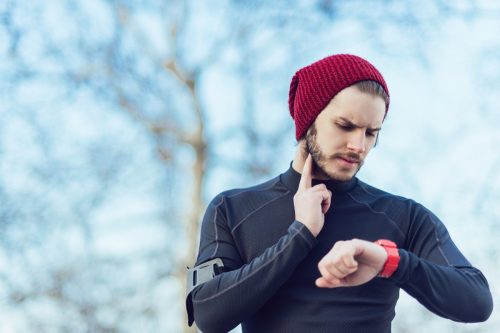
In order to figure out how to do that, you can take a ten-second heart rate where you test your pulse at your wrist for 10 seconds, and then after that, you would times that number by six to see what your resting or activity heart rate is. If you’re working in that 50 to 70% range, we know that you are going to burn fat as your primary fuel. So, to patients and clients, you want to go long, slow and low, long duration, slow pace, and low heart rate.
4
Why Walking is Effective for Fat Burning
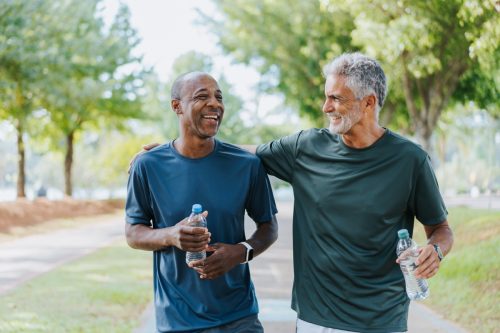
Walking is a very effective method for burning fat for the following reasons. Number one, it is an activity where you can absolutely manage your intensity or duration at your own desire. Unlike sports like pickleball or CrossFit, which often have high spikes in heart rate, walking can be something that you can do at a more leisurely pace, which puts you in that fat-burning zone. We like to say to patients and clients, make sure you can still walk and talk, and that means that you’re not getting out of breath like you would in a more intense activity, which would switch the type of fuel you’re burning from fat to carbohydrates.
5
Benefits of Low-Intensity Walking for Fat Loss
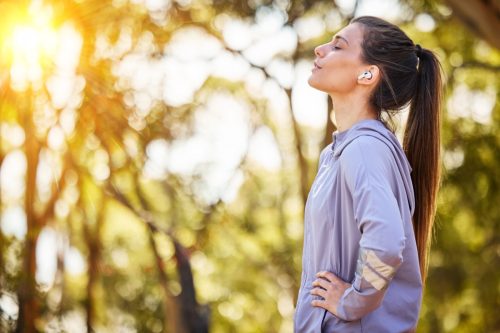
One of the benefits of focusing on fat burning during walks is that walking is a perfect activity to stay in that lower heart rate intensity, which is where you’re going to burn fat as your primary fuel. Unlike other activities, such as spin class or if you were to play a team sport like soccer or basketball, those are typically performed at higher heart rates, so walking is an easy way to stay in that ideal target zone.
6
Walking for Weight Loss and Metabolic Boost
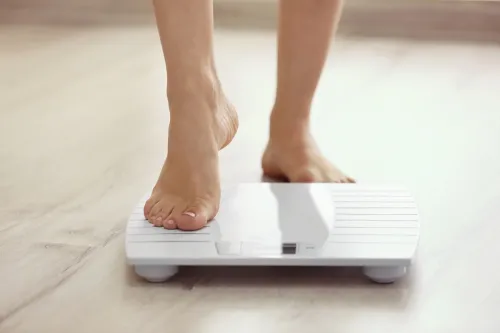
Additionally, when you are focusing on fat burning with walks, most people do experience some weight loss. Additionally, when you’re walking, you are going to boost your metabolic rate, which helps you burn calories more effectively and efficiently, and we all know that when you’re trying to change body composition, you are looking to burn calories. Additionally, walking is very much a sustainable exercise, meaning that most people have access to being able to do it either indoors or outdoors, and really all it requires is bare feet if you’re indoors or appropriate footwear if you’re outdoors.
7
Preparing for a Fat-Burning Walking Routine
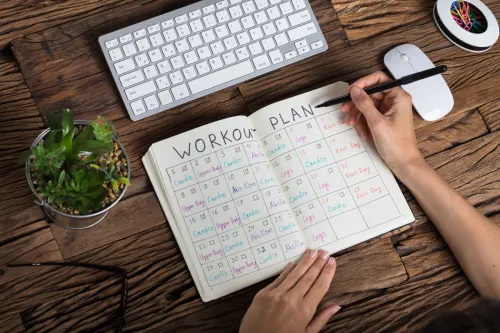
Before starting a fat burning, walking routine, I recommend that everyone does a baseline of their overall activity level and fitness. Even just recording on a notepad how much activity you’re getting day to day and making sure you’re assessing weekdays as well as weekends can give you a perfect baseline place to start. Other considerations include whether you have proper footwear and whether you currently have any injuries. If you do have any injuries, I’d recommend talking to a medical professional before starting a walking program if you don’t have any injuries and you want to move forward.
8
Choosing the Right Footwear for Fat-Burning Walks

The characteristics I typically recommend in shoes are that they are zero or lower drop with no excessive cushion, that they are flexible to where you could twist them like you’re ringing out a towel, and that they have a wider toe box so you can splay and wiggle your toes while you’re wearing the shoe. Those are baseline elements that are important to me when I’m recommending a walking practice for someone.
9
Maximizing Fat Burning with Heart Rate Monitoring
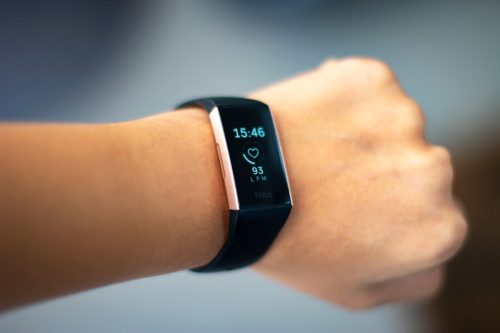
The first simple way to maximize fat burning while walking is to dial in your heart rate so you understand your max heart rate and your 50 to 70% max heart rate range. Implementing that is either manually taking your heart rate and then periodically taking it while you’re walking or using a biohacking device like an Apple Watch or a Garmin, which can be really helpful. Then you’re getting more accurate data back, so that would be how I would implement finding that you’re in the correct heart rate zone in order to burn fat while walking.
10
Using Perceived Exertion to Guide Fat-Burning Walks
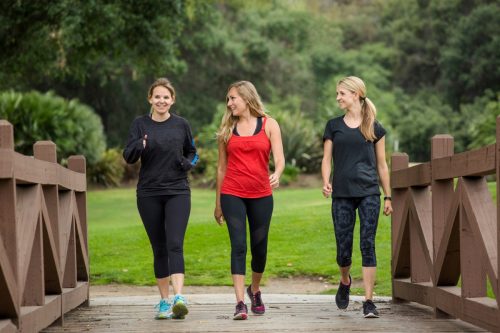
This is an effective way to make sure that you are working at the right intensity, and once you’ve done your walking practice for a couple of weeks, most people can come into that fat-burning zone just by understanding the cadence or how hard they’re breathing, and they don’t have to keep referring back to their watch. That’s called the RPE, which is the rate of perceived exertion. Most people, if they’re walking in the right fat-burning range, should be walking it between a five and a six of RP, with 10 being maximum effort and a zero being laying on the couch.
11
Advanced Techniques to Boost Fat Burning During Walks
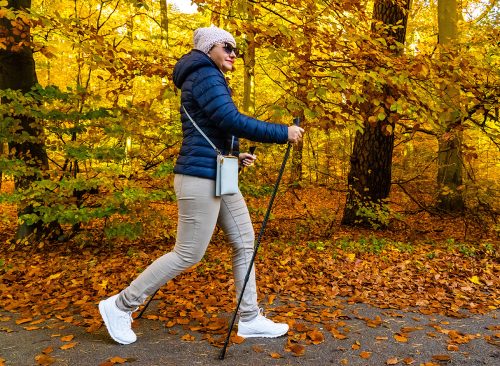
If you want to add some additional ways to boost fat burning during walks, here is what I suggest. Walking poles are a fantastic way to incorporate your core and upper body. They’re going to increase calorie burn, which ultimately will increase fat burn. Often, walking with walking poles is called Nordic walking, and your local sporting goods store typically will have the grip kind of poles.
12
Optimal Walking Duration for Fat Burning

Another element to improve fat burning is to go for longer than 30 minutes. Walking between 30 and 60 minutes is going to check the boxes on our long, low, and slow criteria, so the longer you walk at a lower intensity, the more fat you will burn.
13
Incorporating Resistance for Enhanced Fat Burning

Another way to improve fat burning during walking is to add some resistance. Wear anything from a small to a weighted vest to carrying hand weights in order to create more muscle activation and increase your body temperature. Increasing body temperature might require that you drink some more water during the walk, but it also can help you burn more calories as well as burn more fat.
14
The Importance of Rest Days in Your Walking Routine

A final tip or insight I’d like to share about maximizing fat burning with walking is that we want to make sure people are taking rest days. There’s nothing worse than committing to a new activity and overdoing it and ending up either with an injury or being unmotivated because it feels like too big of a commitment.
15
Debunking the 10,000 Steps Myth: What Science Says
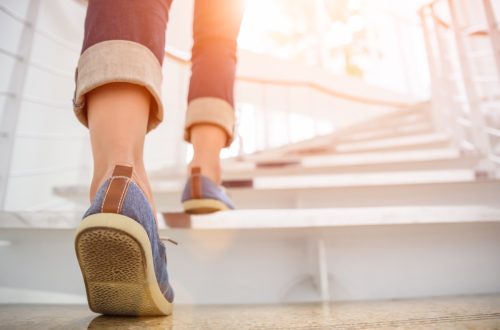
Recent science has told us that walking between 2,500 to 4,500 steps per day can massively reduce cardiovascular disease and death rates, and walking between 7,100 to 8,500 steps per day can reduce up to 50% of cardiovascular death and cardiovascular disease rates, so I think that it’s important for folks to understand that they don’t need to walk 10,000 steps a day to get health benefits. In fact, there are studies that are currently telling us even if you just add a thousand steps to your current level of walking, no matter what your current level is, it will create some cardiac protection and help to reduce your risk of cardiovascular disease.
16
The Mental Health Benefits of Walking
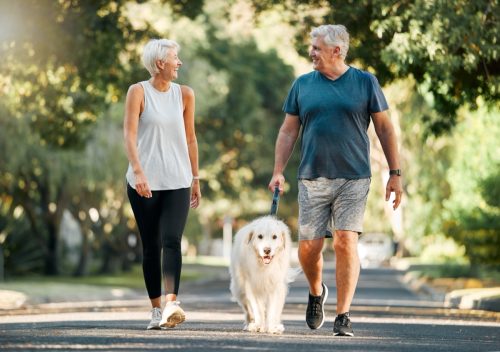
Additionally, I want to really emphasize that walking can be a wonderful social activity, and there’s plenty of data that says it supports mental health and well-being, so inviting a friend on a walk, taking a fuzzy four-legged friend on a walk, or even trying walking in new environments so you might cross paths with some new friends is a great way to maximize the mental health and wellness side of walking.